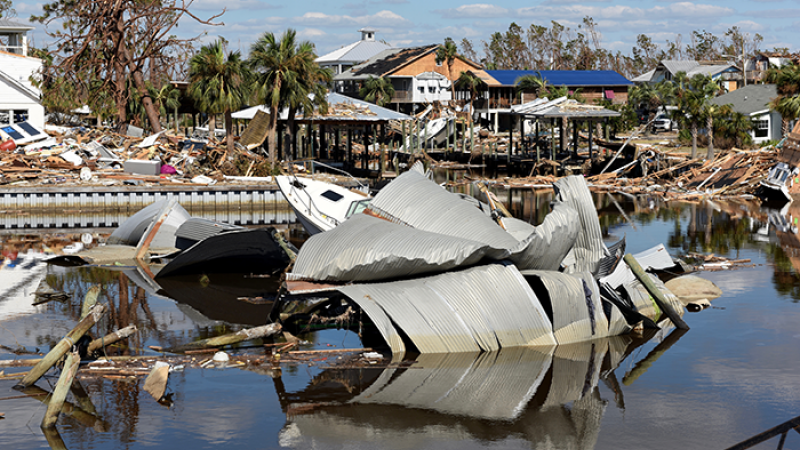NOAA’s National Hurricane Center released a detailed post-storm analysis on Hurricane Michael. The report has upgraded Michael to a Category 5 with maximum sustained winds of 160 mph at landfall. This is the first Category 5 storm to make landfall in the U.S. since Andrew in 1992. Michael joins the ranks of Andrew, Camille, and Labor Day Hurricane of 1936 as the only U.S. landfalling Category 5 hurricanes.

Michael made landfall on October 10, 2018 near Mexico Beach, Florida. In real-time, the storm reached peak intensity of 155 mph. The re-classification was done using available aircraft winds, surface winds, surface pressures, satellite intensity estimated, and Doppler radar velocities.
According to the report, the Category 5 strength winds were likely experienced over a very small area at and near the coast. The change in intensity and estimated winds is more for record-keeping purposes, and does little to change the impacts of the storm. Michael resulted in 16 deaths and $25 billion in damage across the Southeast. Before making landfall along the Florida panhandle, Michael also affected the western tip of Cuba as a Category 2.

Atmospheric pressure is another measure of storm intensity. The lower a storm’s central pressure, the stronger the winds. Michael’s central pressure of 919 millibars (mb) at landfall is the third lowest on record for a landfalling U. S. hurricane, trailing the Labor Day Hurricane of 1935 (892 mb) and Hurricane Camille of 1969 (900 mb).
Michael is also the strongest hurricane in make landfall along the Florida panhandle, and the second strongest along the north Gulf coast. The name Michael was recently retired from the rotating list of hurricane names by the World Meteorological Organization, and was replaced with Milton.


